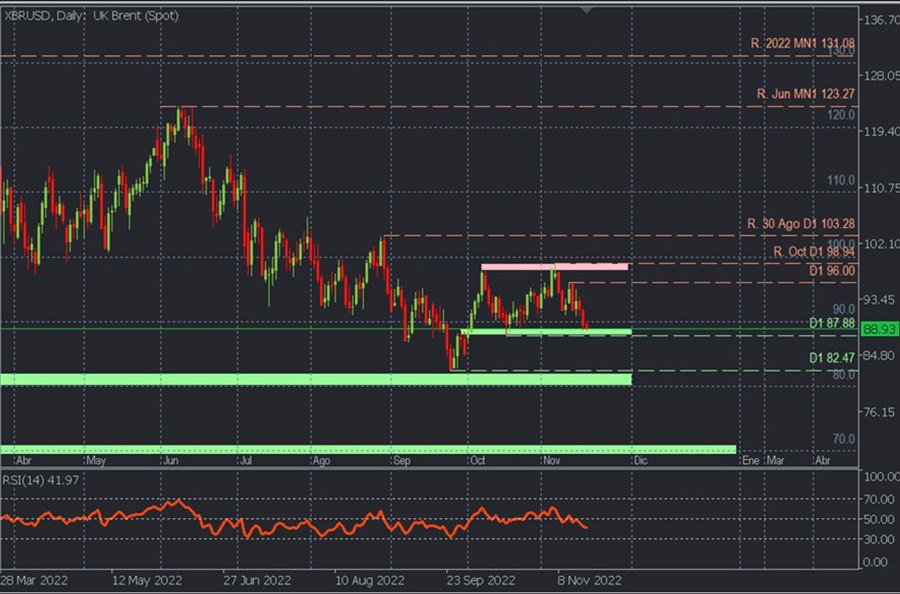Even if you don't follow global politics, you probably know about the war in Eastern Europe. These events have influenced various financial assets, oil in particular. In this article, FBS analysts explain what's going on with crude prices and how the situation may change in the weeks ahead.
Europe strikes back
After the Russian invasion of Ukraine and the illegal annexation of the Donetsk, Lugansk, Zaporizhzhia, and Kherson oblasts, new international sanctions joined those of 2014 after the annexation of Crimea and the non-implementation of the Minsk agreements.
The sanctions focused on reducing Russia's income to prevent it from further financing the war through its primary source of income, the Oil Industry. The steps taken by the Western nations include prohibiting exporting to Russia any technology, machinery, and goods related to energy, transport, aerospace, and other industries, preventing the updating and modernization of national industries.
A new package of sanctions adopted by the European Council in June and October 2022 enters into force on December 5. For refined petroleum products, the measures start in February 2023.
What do the new sanctions on Russian oil mean?
As agreed with the G7, the EU now bans the purchase, import, or transfer of oil and certain oil products from Russia and shipping to third countries of such products originating in or exported from Russia. The exception occurs if the oil or derivative products are purchased at or below a pre-established ceiling price.
Additionally, an insurance limitation is included since shipping, insurance, technical, or financial assistance companies will not be allowed to provide services to tankers carrying Russian crude unless it is sold under the new price standard.
What is the estimated price cap?
According to analysts' estimates, the price of the Russian oil standard should settle at around $60/b. However, Russia has made it clear that it has no intention of selling at such a price. As a result, the country will have to develop new supply chains as alternatives to the new rules.
What will happen before December 5?
On October 31, the US clarified that any cargo of Russian origin loaded before December 5 and discharged before January 19 is not subject to the maximum price. As a result, there will be a margin for maneuvering to adapt to the new rules.
What is Europe doing?
Although 90% of Russian oil imports to Europe are carried out by sea, the remaining 10% will have a temporary exception since this oil arrives through the Druzhba pipeline to those EU member states that depend on Russian supply and have no viable alternative options.
Europe has already undertaken a considerable change in its oil trade. The region diversified its suppliers, preferring European sources to not depend too much on any single country. Saudi Arabia, Iraq, and other Middle Eastern nations are already sending more and more crude to Europe because their Asian market share has been declining due to the influx of cheap oil from Russia.
What awaits crude oil prices in 2023?
The change in supply chains will provide even more stability and confidence in the European benchmark crude from the North Sea, Brent. The price may decline if supply exceeds demand, as China might reduce its reliance on Western crude oil .
Considering this, the International Energy Agency (IEA) forecasts that demand growth will slow to 1.6 million bpd in 2023 from 2.1 million bpd this year.
Brent crude (XBRUSD) has been consolidating in a demand zone. From this area, FBS analysts expect in the short term either a bullish rebound to $96 or a bearish continuation below $87.90. The next demand zone is between $82 and $80. Brent may then remain at those lower levels, as demand will seek the lowest price option, preventing the repeat of the recent price escalation.
Who will benefit from new sanctions against Russia?

According to data from S&P Global, shipowners from the EU and the G7 accounted for 55% of Russia's crude exports from the Baltic and Black Sea in September. In addition, shipping insurers in the G7 countries cover around 95% of the global tanker fleet.
Because of the sanctions, Moscow will have to turn to India, China, and the Persian Gulf to alleviate the shortfall of ships. However, assembling a fleet will take time. While that happens, Russian production may diminish constrained by available shipping capacity, likely increasing pressure on Russia to sell at a limited price to meet Asian demand.
According to Janet Yellen, US Treasury Secretary, "China and other buyers of Russian oil will now have more leverage to negotiate lower prices." She further stressed that "India can continue to buy as much Russian oil as it wants, even at prices above a G7-imposed price cap mechanism, if it moves away from Western shipping, financial, and insurance services bound by the G7 oil cap."




